Xiaosen Li
Graph Attention Multi-Layer Perceptron
Jun 09, 2022



Abstract:Graph neural networks (GNNs) have achieved great success in many graph-based applications. However, the enormous size and high sparsity level of graphs hinder their applications under industrial scenarios. Although some scalable GNNs are proposed for large-scale graphs, they adopt a fixed $K$-hop neighborhood for each node, thus facing the over-smoothing issue when adopting large propagation depths for nodes within sparse regions. To tackle the above issue, we propose a new GNN architecture -- Graph Attention Multi-Layer Perceptron (GAMLP), which can capture the underlying correlations between different scales of graph knowledge. We have deployed GAMLP in Tencent with the Angel platform, and we further evaluate GAMLP on both real-world datasets and large-scale industrial datasets. Extensive experiments on these 14 graph datasets demonstrate that GAMLP achieves state-of-the-art performance while enjoying high scalability and efficiency. Specifically, it outperforms GAT by 1.3\% regarding predictive accuracy on our large-scale Tencent Video dataset while achieving up to $50\times$ training speedup. Besides, it ranks top-1 on both the leaderboards of the largest homogeneous and heterogeneous graph (i.e., ogbn-papers100M and ogbn-mag) of Open Graph Benchmark.
* 11 pages, 7 figures. arXiv admin note: text overlap with arXiv:2108.10097
PaSca: a Graph Neural Architecture Search System under the Scalable Paradigm
Mar 01, 2022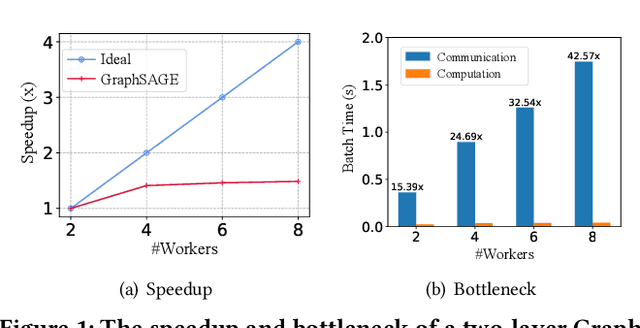

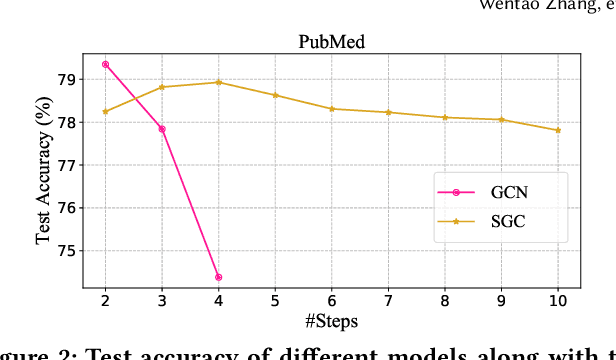
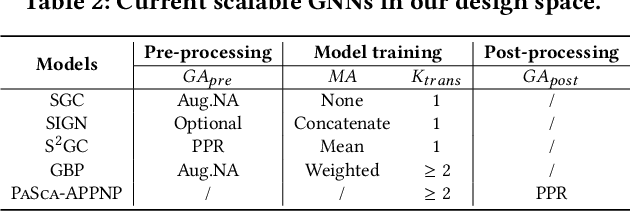
Abstract:Graph neural networks (GNNs) have achieved state-of-the-art performance in various graph-based tasks. However, as mainstream GNNs are designed based on the neural message passing mechanism, they do not scale well to data size and message passing steps. Although there has been an emerging interest in the design of scalable GNNs, current researches focus on specific GNN design, rather than the general design space, limiting the discovery of potential scalable GNN models. This paper proposes PasCa, a new paradigm and system that offers a principled approach to systemically construct and explore the design space for scalable GNNs, rather than studying individual designs. Through deconstructing the message passing mechanism, PasCa presents a novel Scalable Graph Neural Architecture Paradigm (SGAP), together with a general architecture design space consisting of 150k different designs. Following the paradigm, we implement an auto-search engine that can automatically search well-performing and scalable GNN architectures to balance the trade-off between multiple criteria (e.g., accuracy and efficiency) via multi-objective optimization. Empirical studies on ten benchmark datasets demonstrate that the representative instances (i.e., PasCa-V1, V2, and V3) discovered by our system achieve consistent performance among competitive baselines. Concretely, PasCa-V3 outperforms the state-of-the-art GNN method JK-Net by 0.4\% in terms of predictive accuracy on our large industry dataset while achieving up to $28.3\times$ training speedups.
* 13 pages, 8 figures. arXiv admin note: text overlap with arXiv:2104.09880
K-Core Decomposition on Super Large Graphs with Limited Resources
Dec 26, 2021



Abstract:K-core decomposition is a commonly used metric to analyze graph structure or study the relative importance of nodes in complex graphs. Recent years have seen rapid growth in the scale of the graph, especially in industrial settings. For example, our industrial partner runs popular social applications with billions of users and is able to gather a rich set of user data. As a result, applying K-core decomposition on large graphs has attracted more and more attention from academics and the industry. A simple but effective method to deal with large graphs is to train them in the distributed settings, and some distributed K-core decomposition algorithms are also proposed. Despite their effectiveness, we experimentally and theoretically observe that these algorithms consume too many resources and become unstable on super-large-scale graphs, especially when the given resources are limited. In this paper, we deal with those super-large-scale graphs and propose a divide-and-conquer strategy on top of the distributed K-core decomposition algorithm. We evaluate our approach on three large graphs. The experimental results show that the consumption of resources can be significantly reduced, and the calculation on large-scale graphs becomes more stable than the existing methods. For example, the distributed K-core decomposition algorithm can scale to a large graph with 136 billion edges without losing correctness with our divide-and-conquer technique.
GMLP: Building Scalable and Flexible Graph Neural Networks with Feature-Message Passing
Apr 20, 2021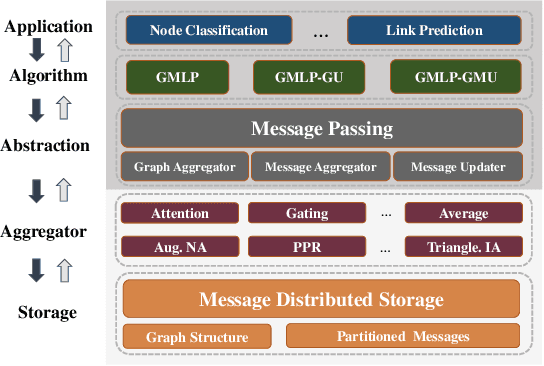
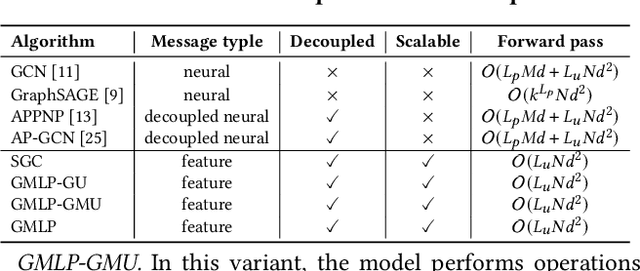
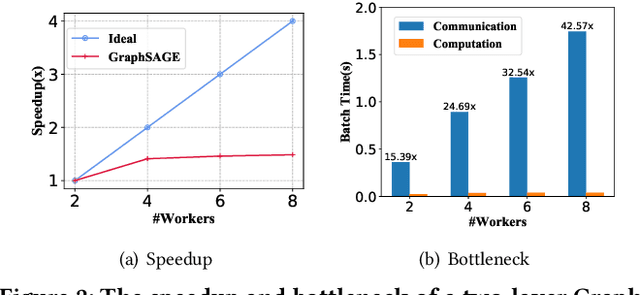
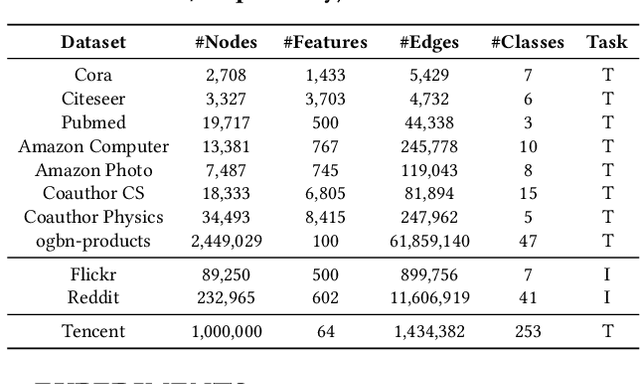
Abstract:In recent studies, neural message passing has proved to be an effective way to design graph neural networks (GNNs), which have achieved state-of-the-art performance in many graph-based tasks. However, current neural-message passing architectures typically need to perform an expensive recursive neighborhood expansion in multiple rounds and consequently suffer from a scalability issue. Moreover, most existing neural-message passing schemes are inflexible since they are restricted to fixed-hop neighborhoods and insensitive to the actual demands of different nodes. We circumvent these limitations by a novel feature-message passing framework, called Graph Multi-layer Perceptron (GMLP), which separates the neural update from the message passing. With such separation, GMLP significantly improves the scalability and efficiency by performing the message passing procedure in a pre-compute manner, and is flexible and adaptive in leveraging node feature messages over various levels of localities. We further derive novel variants of scalable GNNs under this framework to achieve the best of both worlds in terms of performance and efficiency. We conduct extensive evaluations on 11 benchmark datasets, including large-scale datasets like ogbn-products and an industrial dataset, demonstrating that GMLP achieves not only the state-of-art performance, but also high training scalability and efficiency.
 Add to Chrome
Add to Chrome Add to Firefox
Add to Firefox Add to Edge
Add to Edge